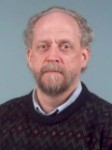Carlson receives competitive research grant from National Institute of Health
Posted: May 11, 2009
KIRKSVILLE, Mo. – After years of work and scores of proposals, George Carlson, Ph.D., professor of physiology at A.T. Still University’s Kirksville College of Osteopathic Medicine (ATSU-KCOM), received his first grant from the National Institute of Health (NIH) for his work on treatment options for muscular dystrophy.
His win means that Dr. Carlson and ATSU now have a total of $201,967 to use for research involving testing new drug therapies for muscular dystrophy. On top of his award from NIH, Dr. Carlson also gained a grant from the AFM, or Association Francaise contre les Myopathies, for roughly $80,000 over two years. Based out of France, this association fights neuromuscular diseases by supporting projects, and in 2007 they committed 66 million Euros to research and to the development of new therapies. Each year they support nearly 400 projects.
A veteran to the grant-writing process, Dr. Carlson has received grants in the recent past from ATSU, the AFM and Charley’s Fund, a non-profit organization based out of Massachusetts that is dedicated to researching muscular dystrophy. But he’s spent the past 20 years applying for a grant from the NIH, a federal agency that awards money in a very competitive process to the highest quality research. This major agency gives grants to institutions and individuals and encourages projects of high scientific caliber, investigator-initiated research and unique research projects.
“I’m very happy to have received the grants — it will make our research easier as we try to alleviate the effects of this terrible disease,” Dr. Carlson said.
Since 1980, Dr. Carlson has been researching muscular dystrophy and trying to discover what drugs would be useful in fighting the fatal disease. He recently tested a new class of drugs on a mouse model, and he made the first publication on these results that was useful in the scientific field. Although he works on his own in Kirksville, Mo., he is also a member of an international consortium initiated by the European organization Treat-NMD, and collaborates with other researchers of the consortium to put together laboratory protocol assessing new treatment plans. Once the drugs are proven effective on the mouse model, Dr. Carlson said the end result would be to use the same drugs to treat humans. He praised the University for supporting the strategic research fund, which has allowed him to continue his work.
“It’s important to give ATSU credit for giving money to the strategic research fund and for giving me the strategic research grant,” he said. “Without that funding I would have not accumulated the research necessary to gain these two new awards.”
The combined victory gives Dr. Carlson another few years of funding for his research – the NIH grant lasts for three years, and the AFM grant lasts for two. He will continue to test new treatments and publish his research as he works with scientists worldwide to battle the debilitating spread of muscular dystrophy.